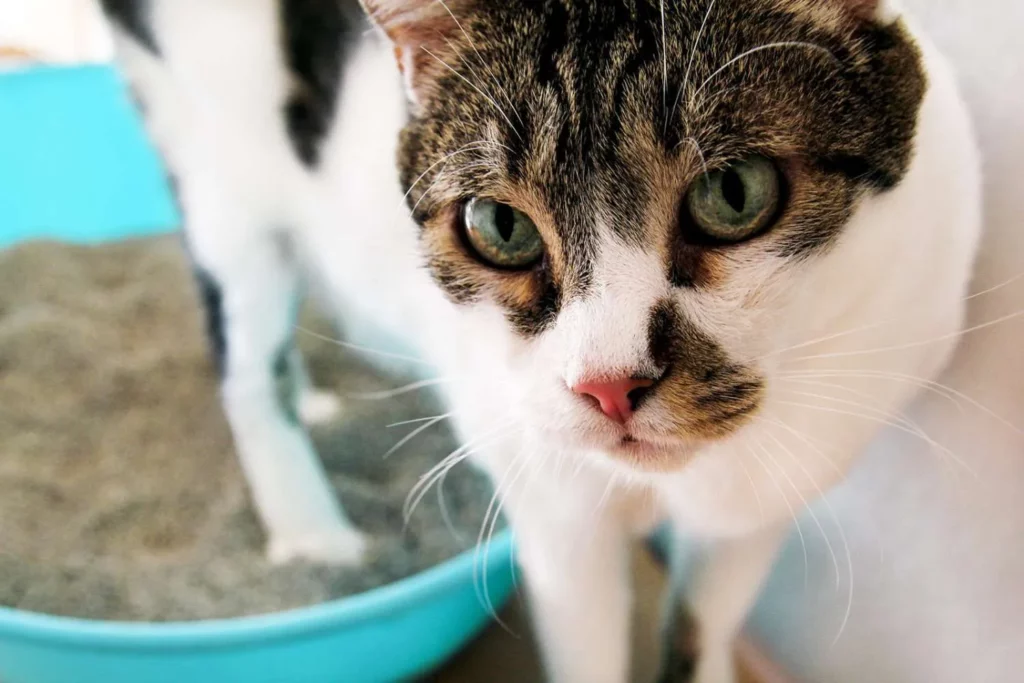Are you a cat owner who is looking for how to treat UTI in cats? Learn how to treat UTI in cats for both males and females.

Urinary Tract Infection (UTI) in cats can be a distressing issue, affecting their health and overall well-being.
As a pet owner, it’s crucial to recognize the signs and provide effective treatment to ensure your feline companion’s comfort and health.
How to Treat UTI in Cats

Here are eight essential strategies to treat UTI in cats:
1. Consult a Veterinarian for Accurate Diagnosis
Seeking professional guidance is crucial if you suspect your cat is suffering from a UTI.
Furthermore, a veterinarian will conduct a thorough examination and possibly recommend urine tests to confirm the presence of a UTI.
Accurate diagnosis is the key to formulating an effective treatment plan tailored to your cat’s specific condition.
2. Introduce Antibiotics for Treating the Cat’s Infection
Once diagnosed, the veterinarian might prescribe antibiotics to combat the bacterial infection causing the UTI.
Also, it’s crucial to strictly adhere to the dosage and duration prescribed by the vet.
Completing the full course of antibiotics is essential to ensure the infection is completely eradicated.
3. Encourage the Cat to Consume More Water
Encouraging your cat to consume more water can help flush out bacteria from their system.
Providing fresh, clean water in multiple locations around the house and investing in a water fountain designed for pets can entice them to drink more.
4. Focus on a Diet that Has High Moisture Content
Certain diets, particularly those with a high moisture content, can assist in maintaining urinary tract health in cats.
Furthermore, you can consider switching to specialized urinary tract health cat foods recommended by veterinarians.
Also, these diets are formulated to promote urinary health and prevent the recurrence of UTIs.
5. Maintain Proper Litter Box Hygiene
A clean litter box is crucial for a cat’s health. Regularly clean and sanitize the litter box to prevent bacteria buildup.
Cats are particular about hygiene, and a clean litter box encourages them to urinate frequently, aiding in flushing out potential bacteria from their system.
6. Provide a Stress-Free Environment
Stress can contribute to UTIs in cats. Ensure a calm and stress-free environment for your feline companion.
Also, this includes providing ample opportunities for play, cozy resting spots, and reducing environmental stressors.
7. Monitor Symptoms and Follow-up Vet Visits
Keep a close eye on your cat’s behavior post-treatment. Also, you can monitor for any recurring symptoms or unusual behavior from your cat.
If symptoms persist or worsen, promptly revisit the vet for further evaluation and treatment adjustments.
8. Introduce Supplements and Natural Remedies
Some supplements and natural remedies might aid in preventing UTIs or supporting urinary tract health.
However, always consult a veterinarian before introducing any new supplements or alternative treatments to ensure they are safe and appropriate for your cat’s condition.
In conclusion, treating UTIs in cats requires a multifaceted approach and dedication to your pet’s well-being.
By implementing these strategies, you can effectively manage and prevent UTIs, ensuring your cat enjoys a healthy and comfortable life.
Related Searches:
